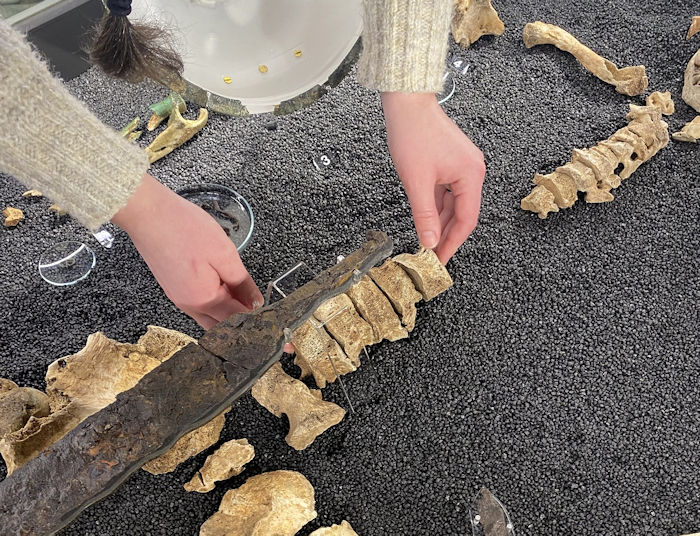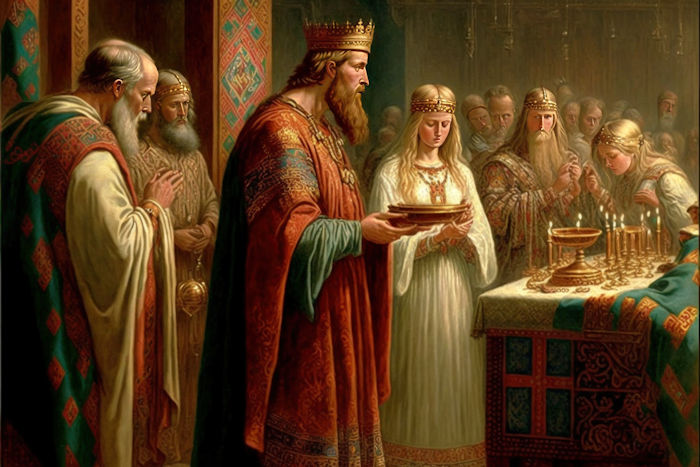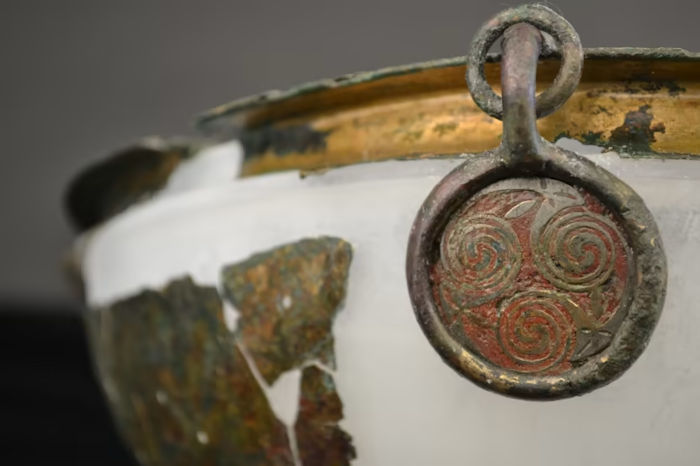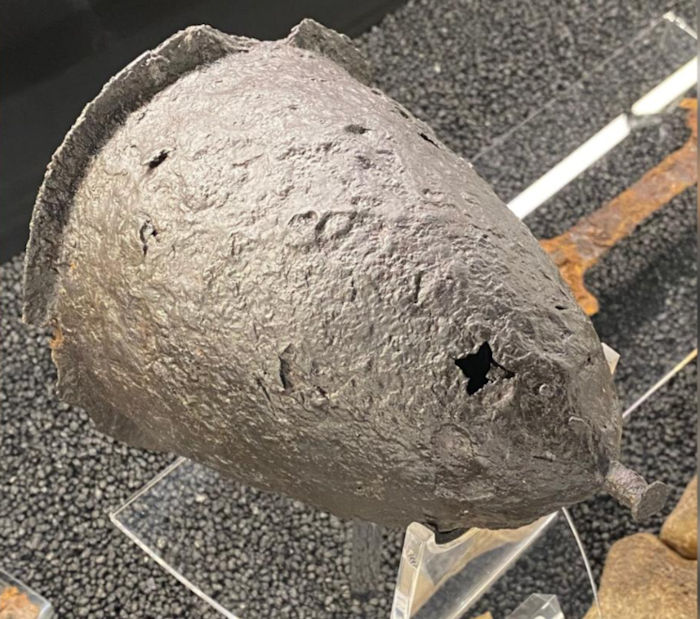Conny Waters – AncientPages.com – The mystery surrounding the remains of two Anglo Saxons – identified as a man and a woman buried 1,400 years ago in south Oxfordshire – may finally be solved thanks to modern scientific techniques.
A team from the University of Reading, Cranfield University and Oxfordshire Museum Service is learning more about the pair, discovered at Lowbury Hill, Oxfordshire, in 1913 and 1914.

Scientists examine what was found in the burial. Credit: University of Reading
Shortly after their excavation and until 1921, both individuals were displayed in University College, Reading’s Museum of History and Archaeology – now known as the Ure Museum. While the man’s remains, described as the ‘Lowbury Man’, are now on display at the Oxfordshire Museum in Woodstock, the woman’s bones have been in storage, out of sight of the public – until now.

Anglo- Saxons. Credit: Adobe Stock – Justinas
“It is perhaps understandable that previous generations of researchers focused on Lowbury Man and not Lowbury Woman,” said Ph.D. candidate Summer Courts, who is conducting the investigations.
“The archaeologists of a century ago focused on the man and the high-status objects he was buried with. Today, we can use the latest scientific techniques to uncover more about both people.
“While the woman was buried without any significant items, her remains may still reveal her story and tell us something new about the past.”
Possible Irish links?
Analysis from previous investigations suggests the man was a seventh-century warrior who lived in Cornwall or western Ireland before being buried on Lowbury Hill. His grave contained various items, including a sword, shield, enameled spearhead, knife, shears, a bronze hanging bowl, and a bone comb.

The Lowbury Man’s grave contained elaborate items, including a bronze hanging bowl. Credit: Oxfordshire Museum Service
His discovery within an Early Medieval barrow and the items with which he was buried indicate he was a high-status individual from the Early Medieval (Anglo-Saxon) period, with some experts suggesting he may have been a soldier. He was discovered near a woman, who was buried in line with the wall of a Roman-era enclosure on the hilltop. From her skeleton, she is believed to have been about 40 years old. Her remains have been radiocarbon dated to about 550 to 650 AD. However, as she was buried without grave items, less is known about her.
Late last year, both sets of remains were taken for detailed laboratory analysis. Summer Courts, who studied the remains as part of her Ph.D. research at the University of Reading, and Professor Amy Smith, her supervisor and Curator of the University’s Ure Museum, are hoping the modern analysis will confirm the pair’s Sєx, their ancestry and relations, their health, and where and how they lived.
‘Thrilling history’
PhD candidate Summer, said: “This is a fascinating site with a thrilling history. We hope that with the latest archaeological techniques, and with the help of the local community, we can find out more about the lives of these two people and the Lowbury Hill site.
“We would like to know more about how the site was used by past communities, who the two individuals buried on the hill were, and why their communities felt it was appropriate to bury them there.”

‘Sugar loaf’ Shield Boss found within the Lowbury Hill burial. Image courtesy of Oxfordshire Museum Service
Bone analysis took place at the Cranfield Forensic Insтιтute with project co-supervisor Dr Sophie Beckett and samples will be sent to Germany for examination in collaboration with Dr. Stephan Schiffels at the Max Planck Insтιтute for Evolutionary Anthropology. Results from the study are expected later in 2023. The bones of the man returned to Oxfordshire Museum in February, overseen by co-supervisor Angie Bolton, Archaeology Manager at Oxfordshire Museum Service, ready to be put back on display to the public.
The team’s research means that more than 100 years later, Courts and Smith are following in the footsteps of a research fellow from Reading’s Classics Department, Donald Atkinson, who led the first modern archaeological excavation of the site in 1913 and 1914. Atkinson was the archaeologist who discovered the Lowbury duo.
See also: More Archaeology News
In a press statement, Councillor Jenny Hannaby, Oxfordshire County Council’s Cabinet Member for Community Services and Safety, said: “We are delighted at Oxfordshire County Council to be able to work with Summer and the rest of the team from the University of Reading to discover more about the individuals buried at Lowbury Hill and the site itself. I have been watching the project closely and am excited to learn more as work continues.”
Written by Conny Waters – AncientPages.com Staff Writer





